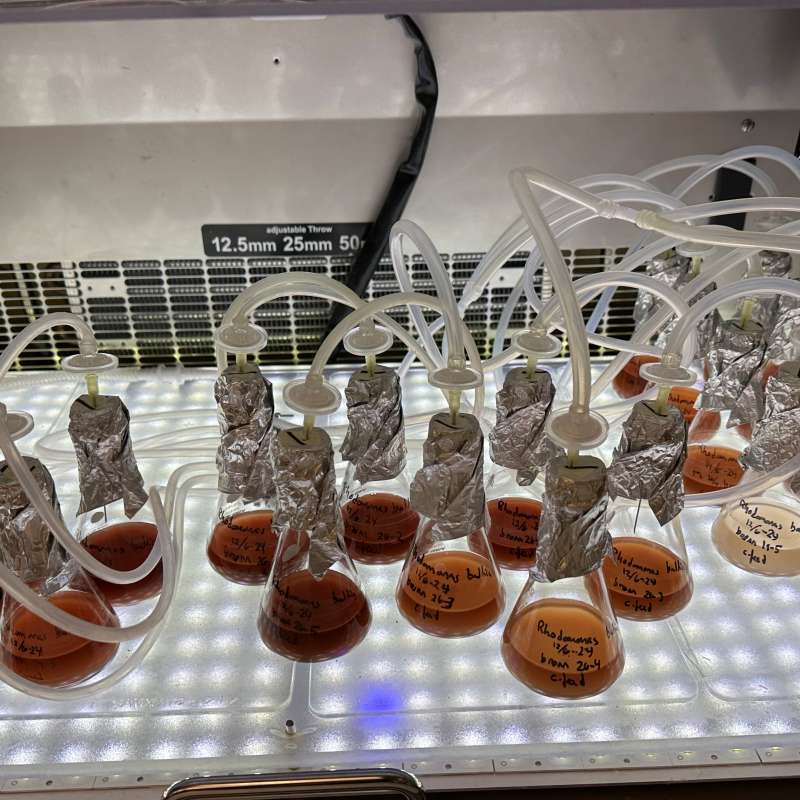Ksenia Gulyaeva
Overingeniør
Biografi
Utdanning: Mastergrad i bioteknologi (NTNU), spesialisering i molekylær biologi med fordypning innen organisk og analytisk kjemi med fokuset på dyrking av mikroalger og analyse av produsert biomasse. Massespektrometri ved Norges miljø og biovitenskapelig universitet (NMBU).
Kvalifikasjoner: LC-MS/MS, HPLC-UV, GC-MS, IC, UPCC, kolorimetriske analyser vha spektrometri, spektrofotometri, mikrobiologiske analyser, sterile teknikker, kulturdyrking, mikroskopi, samt grunnleggende teknikker innenfor molekylær genetikk.
Oppgaver: Ingeniør i mikroalgeteknologi: dyrking av mikroalger inkl. storskala fotobioreaktorer. Implementering av optimaliserte dyrketeknikker for produksjon av algebiomasse med tilpasset komposisjon med hovedfokuset på proteininnhold, aminiosyresammensetningen, PUFAs, pigmenter, aktive biomolekyler og potensielle biophamaceutivals.
Drift av mikroalgelaboratorium og analytisk lab, håndtering og vedlikehold av avanserte laboratorieinstrumenter. HMS, opplærling og kurs i instrument- og metodebruk. Organiske, biokjemiske og mikrobiologiske analyser.
Forfattere
Roger Roseth Rita Cabilan Just Olsen Elise Myhre Sverdrup Rikard Pedersen Hege Bergheim Ksenia Gulyaeva Elise Roaldkvam Andreas Olaus HarstadSammendrag
Det er ikke registrert sammendrag
Sammendrag
Det er ikke registrert sammendrag
Forfattere
Andrii Butkovskyi Yuying Jing Hege Bergheim Diana Lazar Ksenia Gulyaeva Sven R. Odenmarck Hans Ragnar Norli Karolina M. Nowak Anja Miltner Matthias Kästner Trine EggenSammendrag
Det er ikke registrert sammendrag

Divisjon for bioteknologi og plantehelse
Microalgae contributions to future protein and fatty acid rich feed for Norwegian chicken at industrial scale - ALGEKYLLING
The main goal of the project is to create a knowledge and technology platform for production and use of chicken feed with proteins and polyunsaturated fatty acids (PUFA) from Norwegian microalgae biomass. The project consortium includes the whole production/value chain.

Divisjon for bioteknologi og plantehelse
MikRho - Etablere Rhodomonas kultur med gunstig mikrobiom tilpasset industriell produksjon
Som en av de største mikroalgeprodusentene i Norge, er CFEED med å tilby bærekraftige fôrløsninger gjennom sin produksjon av mikroalger og hoppekrepsen Acartia tonsa. Hoppekrepsen benyttes videre som startfôr til blant annet torsk, berggylte og seabream, hvor den er med å bedre utbyttet til fiskeprodusentene gjennom å øke vekst, overlevelse og å forbedre larvekvaliteten.

Divisjon for bioteknologi og plantehelse
MikRho - Establishing Rhodomonas culture with beneficial microbiome adapted to industrial production
As one of the largest microalgae producers in Norway, CFEED contributes to sustainable feed solutions through its production of microalgae and the copepod
